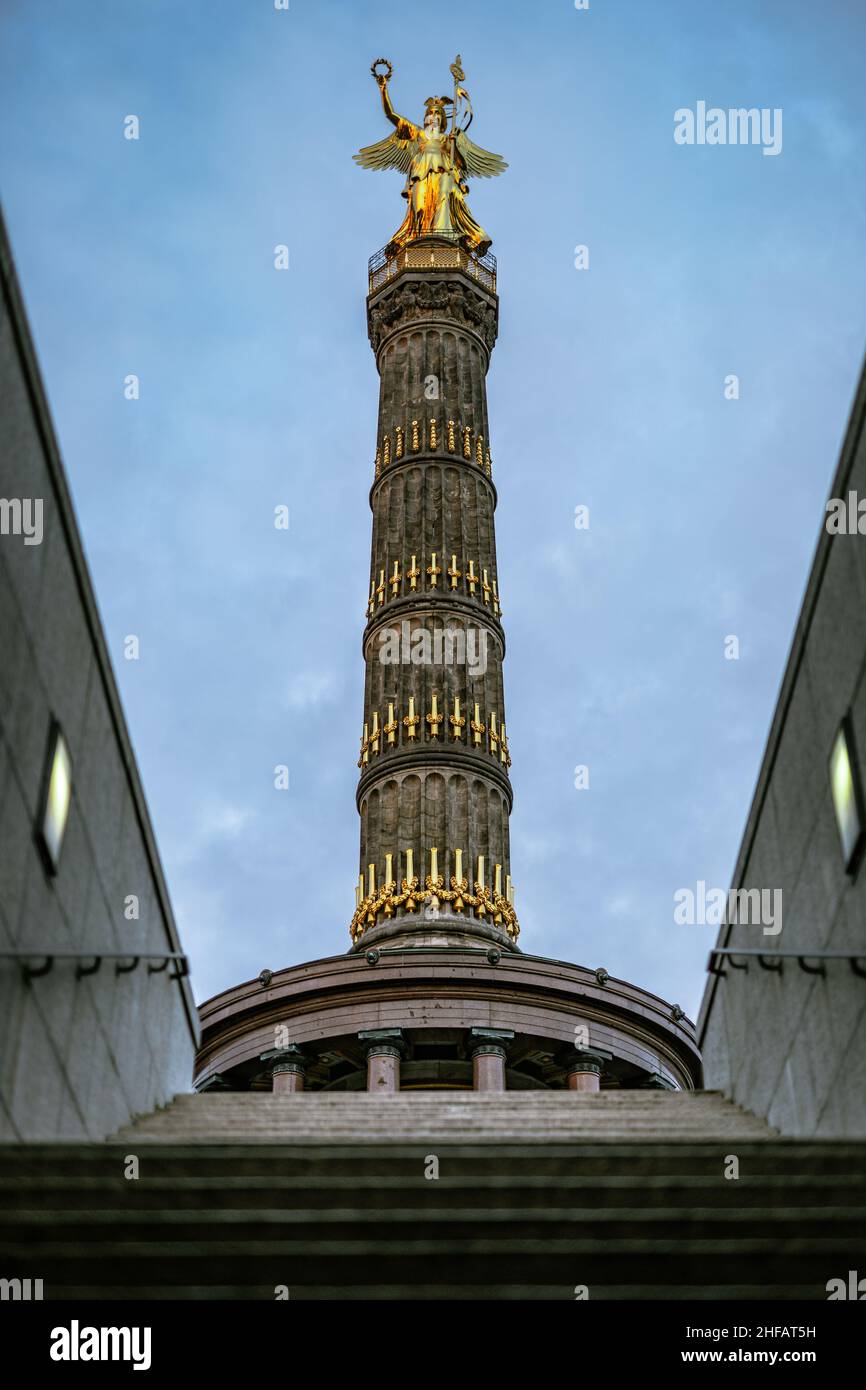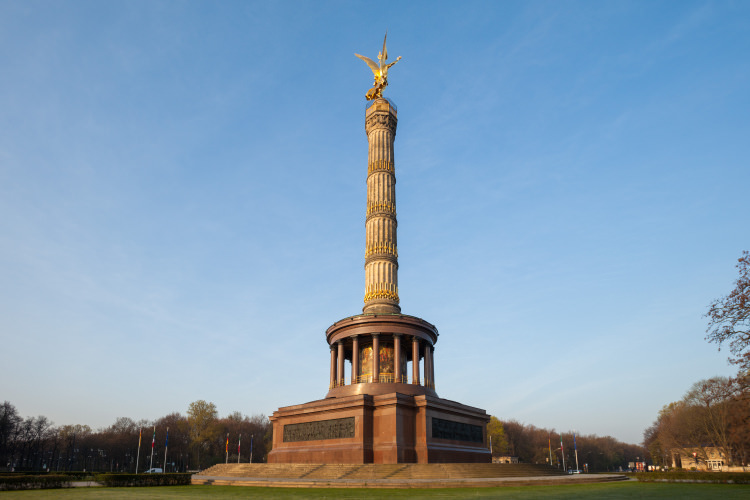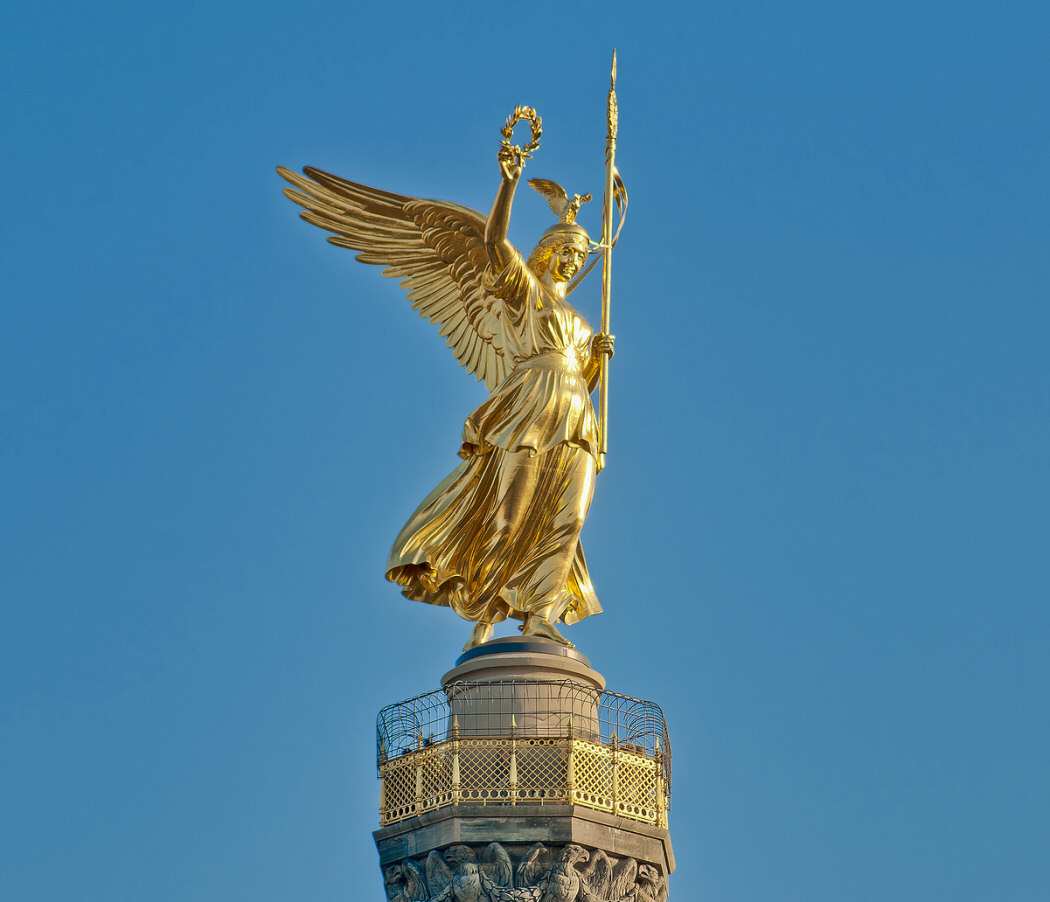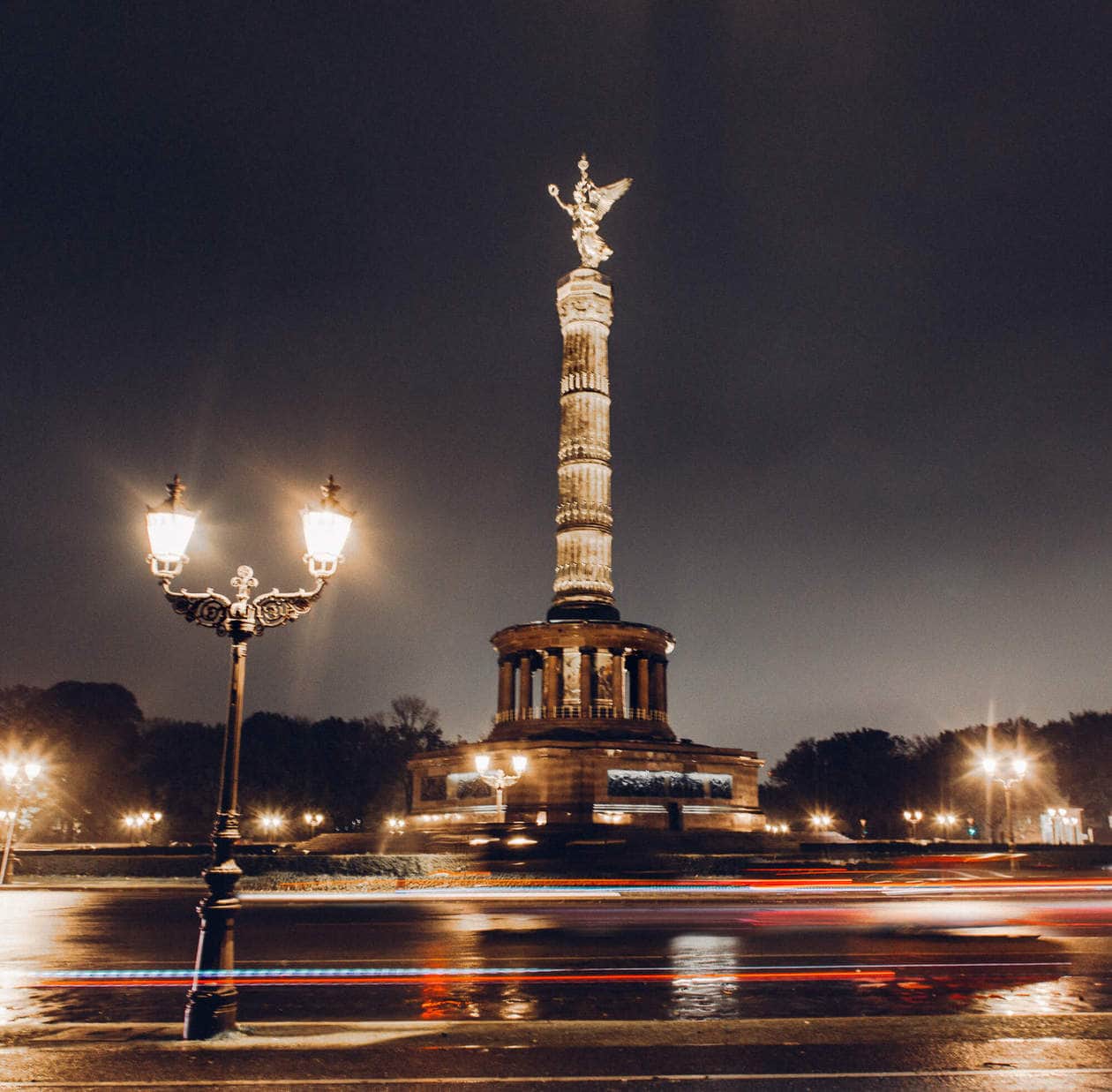
Berlin Victory Column, golden statue Stock Photo Alamy
The statue, the supreme symbol of the Prussian Reich's victory and domination over its enemies, represents the Greek goddess Victoria (goddess of victory) crowning the city of Berlin. It was built by the sculptor Friedrich Drake. The incredible conservation of the column, despite the two World Wars and the numerous bombings in Berlin, is due to.

Berlin’s Victory Column History and Facts History Hit
The Victory Column, which is a labor of mathematics and sandstone, stands 67 meters tall and consists of four solid blocks to consecrate the magnitude of Prussia's victories. A series of substantial rings lead up to the very top, with a golden garland added in the mid-1930s.

Victory Monument Siegessauele in Berlin Editorial Image Image of attraction, architecture
The victory column was built in 1873 to celebrate Prussia's victory in the Franco-German War. It was moved to its present location in the Tiergarten in 1938. You can go to the top via 270 steps to see great views of Berlin. Suggest edits to improve what we show. Improve this listing Tours & experiences

The Victory column (Siegessäule) in Berlin, Germany, with the statue of Victoria at the top
Download here for free The sculpture The bronze sculpture at the top of the column weighs 35 tons and measures 8 metres and 30 centimetres. Created by Friedrich Drake, this figure represents Victoria, the goddess of victory, the Roman equivalent of the Greek goddess Nike.

Victory Monument Berlin Stock Photo Alamy
The Berlin Victory Column (German: Siegessäule) is a monument located at the very heart of Berlin's largest inner city park - the Tiergarten. It features an observation deck (or viewing platform) from where you have a nice view on the surrounding park Tiergarten, the boulevard Strasse des 17.

golden angel statue on victory column berlin, germany Stock Photo Alamy
The monument is meant to commemorate Germany's victories against Denmark, Austria and France between 1864 and 1871, a fact that is indicated by the sculpture's victorious pose as well as the gilded gun barrels on the columns and the mosaic by Anton von Werner in the colonnade.

Top 15 Most Interesting Places to Visit in Berlin
The Siegessäule, or Berlin Victory Column in English, is a monument in Berlin that was erected in the mid-19th century to commemorate the Prussian-Austrian victory against the Kingdom of Denmark.. 60 gilded cannons captured by the Prussian Army during the three wars, whilst the monument is topped by an eight-metre statue of the Roman.

Monument of Victory, Berlin. Andiamo
The statue is a prominent figure against the Berlin sky, serving as a constant reminder of the victories and struggles that have shaped the city's history. Visiting the Victory Column: Tips and Recommendations. If you're planning a visit to Berlin, exploring the Victory Column should be on your must-see list.

Victory Column Siegessaeule, Monument in Berlin, Germany. Stock Image Image of tourism
Victory Column is one of the main tourist attractions located at the Großer Stern (Great Star) in Tiergarten in Berlin, Germany. It was built to commemorate the victory of Prussia (a prominent state of Germany in the past) in the Danish-Prussian War. Inaugurated in 1873, originally, the monument was constructed in Königsplatz (present Platz.

Die Siegessäule in Berlin // The Victory Column in Berlin Siegessäule GroßerStern Berlin
The Victory Column, situated in the Tiergarten district of Berlin, is a towering structure reaching a height of 67 meters (or 220 feet) tall. This impressive monument was originally erected between 1864 and 1873 to commemorate Prussia's military triumphs.

Statue of Victory (Viktoria) atop the Siegessäule in Berlin. The Siegessäule (victory column
French tricolor raised atop the Victory Column statue during the 1945 Allied Victory Parade View from the platform of the Victory Column towards the The Victory Column ( German: Siegessäulepronounced [ˈziːɡəsˌzɔɪ̯lə] ⓘ, from Sieg 'victory' + Säule 'column') is a monument in Berlin, Germany.
:max_bytes(150000):strip_icc()/VictoryColumn12-e30cd67f879e46f4a6cc167cf6875745.jpg)
Top 10 Things to See in Berlin
The Victory Column, known to many for the big parties of the Love Parade, is a national monument and one of the most beautiful viewpoints of the German capital. Read below what you can see and do on site: 1. Marvel at the Architecture Before heading inside the landmark, why not take time to look at the architecture of the Victory Column?

Siegessäule, Victory Column in Berlin Statue, Bronze sculpture, Sculptures
The Berlin Victory Column stands at a majestic height of 67 meters (220 feet) and is situated on a large roundabout known as the Großer Stern. The monument is primarily made of red granite and features several distinctive elements that make it truly unique. At the base of the column, there is a circular platform adorned with four large statues.

Victory monument Berlin by Derrflinger on DeviantArt
Triumphal Arch of Orange, France, the oldest surviving triple-arched Roman triumphal arch, probably built during the reign of Emperor (27 BC-14 AD) A triumphal arch is a free-standing monumental structure in the shape of an archway with one or more arched passageways, often designed to span a road, and usually standing alone, unconnected to.

Statue of Victory atop the Siegessaule in Berlin. Statue, Tours, Landmarks
The Victory Column, or Siegessäule in German, is one of the most recognizable landmarks in Berlin, and its location in the center of Tiergarten makes it easy to include on your itinerary. This guide to visiting the Victory Column in Berlin will tell you everything you need to know to enjoy this attraction, including history, directions, and more.

A First Timer's Guide to Visiting Berlin // 15 Tips to Know Before You Go
The Berlin Victory Column was finished in 1873 according to plans by Heinrich Strack, an architect from the Schinkel School. The over 8m high sculpture of Victoria memorialises the victory of Prussia in the German-Danish War in 1864, the German War in 1866, and the Franco-Prussian War in 1870/71. The column originally stood at Königsplatz and.